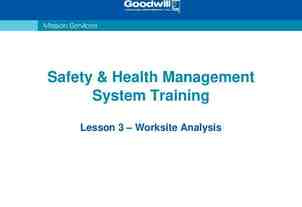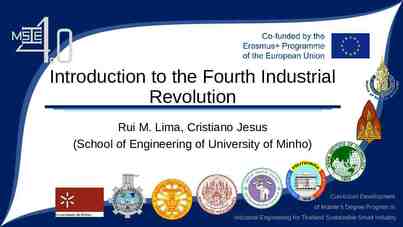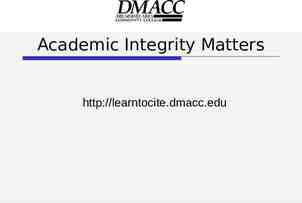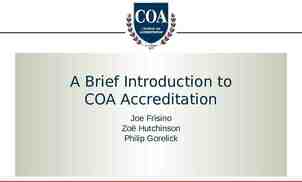CMMI Overview Presented by: Bruce Boyd 28 January 2004 CMMI Overview
55 Slides614.00 KB

CMMI Overview Presented by: Bruce Boyd 28 January 2004 CMMI Overview – January 2004

Agenda Why use a Process Model? CMMI Structure Comparisons with SW-CMM and EIA/IS 731 A Sampling of CMMI Process Areas Available Training Appraisals CMMI at Boeing St. Louis CMMI Overview – January 2004 2

Early Process Improvement The theories of process management are a synthesis of the concepts of Deming, Crosby, Juran, and others. Over the past 30 years, these theories have been used to address problems common to many organizations. Solutions have been discovered, but a gap existed between the state of the practice and the state of the art. Many of these concepts have been used to build process-improvement models. CMMI Overview – January 2004 3

What Is a Process Model? A model is a structured collection of elements that describe characteristics of effective processes. Processes included are those proven by experience to be effective. CMMI Overview – January 2004 4

How Is a Model Used? A model is used: – to help set process improvement objectives and priorities, improve processes, and provide guidance for ensuring stable, capable, and mature processes – as a guide for improvement of organizational processes A model provides: – a place to start – the benefit of a community’s prior experiences – a common language and a shared vision – a framework for prioritizing actions CMMI Overview – January 2004 5

Categories of Process Improvement Benefits Process improvement benefits fall into eight general categories: –improved schedule and budget predictability –improved cycle time –increased productivity –improved quality (as measured by defects) –increased customer satisfaction –improved employee morale –increased return on investment –decreased cost of quality CMMI Overview – January 2004 6

What is a CMM? Capability Maturity Model: A reference model of mature practices in a specified discipline, used to assess a group’s capability to perform that discipline CMMs differ by – Discipline (software, systems, acquisition, etc.) – Structure (staged versus continuous) –How Maturity is Defined (process improvement path) – How Capability is Defined (institutionalization) “Capability Maturity Model ” and CMM are used by the Software Engineering Institute (SEI) to denote a particular class of maturity models Capability Maturity Model , CMM , CMM Integration, and CMMI are service marks and registered trademarks of Carnegie Mellon University CMMI Overview – January 2004 7

So Many Models, So Little Time Software CMM EIA 731 Systems Engr CMM IPD CMM YACMM People CMM Software Acq CMM FAA iCMM CMMI Overview – January 2004 Systems Security Engr CMM Different structures, formats, terms, ways of measuring maturity Causes confusion, especially when using more than one model Hard to integrate them in a combined improvement program Hard to use multiple models in supplier selection 8

Bridging the Divide CMMI: Integrates systems and software disciplines into one process improvement framework. Provides a framework for introducing new disciplines as needs arise. CMMI Overview – January 2004 9

The CMMI Project DoD sponsored collaboration between industry, Government, SEI Over 100 people involved (1997 – 2001) U.S. Army, Navy, Air Force Federal Aviation Administration National Security Agency Software Engineering Institute ADP, Inc. AT&T Labs BAE Boeing Computer Sciences Corporation EER Systems Ericsson Canada Ernst and Young General Dynamics Harris Corporation Honeywell CMMI Overview – January 2004 KPMG Lockheed Martin Motorola Northrop Grumman Pacific Bell Q-Labs Raytheon Reuters Rockwell Collins SAIC Software Productivity Consortium Sverdrup Corporation TeraQuest Thomson CSF TRW 10

CMMI Models Source Models Capability Maturity Model for Software V2, draft C (SW-CMM V2C) EIA Interim Standard 731, System Engineering Capability Model (SECM) Integrated Product Development Capability Maturity Model, draft V0.98 (IPD-CMM) CMMI Overview – January 2004 SE/SW I M M C Staged tion enta Repres /SW CMMI-SE ous Continu tion nta Represe Combined System Engineering / Software Engineering model Can be applied to: – Just the software engineering projects in an organization – Just the system engineering projects in an organization – Both – IPPD/SS can be used in either/both 11

CMMI Product Suite Training Models – Model – Disciplines » Introduction to CMMI » Systems Engineering SE » Intermediate Concepts » Software Engineering SW – Instructor Training » Integrated Product and – Lead Appraiser Process Development (IPPD) Appraisal methods »Supplier Sourcing (SS) –Appraisal Requirements – Representations for CMMI (ARC) » Staged – SCAMPI Method Description »Continuous Document (MDD) CMMI Overview – January 2004 12

Available Models The following CMMI Models exist: – SE/SW Staged – SE/SW Continuous – SE/SW/IPPD Staged – SE/SW/IPPD Continuous – SE/SW/IPPD/SS Staged – SE/SW/IPPD/SS Continuous – SW Staged – SW Continuous The SW-only models are identical to the SE/SW models except that the SE amplifications have been removed (delta about 7 pages) CMMI Overview – January 2004 13

Model Representations ML5 Continuous 5 ML4 4 ML3 3 ML2 1 2 ML 1 0 Process Area Capability Staged PA PA PA . . .for an established set of process areas across an organization . . .for a single process area or a set of process areas CMMI Overview – January 2004 14

Why Does CMMI Have Two Representations? Source Model Heritage –Software CMM--Staged –SECM--Continuous –IPD CMM--Hybrid Proponents for each type of representation were part of CMMI product development team. Selecting a single representation approach became “too hard”. A compromise was made to initially support two representations of the model with equivalent content. CMMI Overview – January 2004 15

Advantages of Each Representation Staged Representation: Provides a roadmap for implementing: –groups of process areas –sequencing of implementation Familiar structure for those transitioning from the SW-CMM Continuous Representation: Provides maximum flexibility for focusing on specific process areas according to business goals and objectives. Familiar structure for those transitioning from the systems engineering community. CMMI Overview – January 2004 16

CMMI Structure One Model, Two Representations Appendixes Appendixes Maturity Level 5 OID, CAR Maturity Level 4 OPP, QPM Maturity Level 3 REQD, TS, PI, VER, VAL, OPF, OPD, OT, IPM, RSKM, DAR Maturity Level 2 REQM, PP, PMC, SAM, MA, PPQA, CM Overview Introduction Structure of the Model Model Terminology Maturity Levels, Common Features, and Generic Practices Understanding the Model Using the Model CMMI-SE/SW Staged CMMI Overview – January 2004 Support CM, PPQA, MA, CAR, DAR Engineering REQM, REQD, TS, PI, VER, VAL Project Management PP, PMC, SAM IPM, RSKM, QPM Process Management OPF, OPD, OT, OPP, OID Overview Process Management Introduction PAs Structure of the Model Goals Model Terminology - Practices Capability Levels and Generic Model Components Understanding the Model Using the Model CMMI-SE/SW Continuous 17

Model Components Process Areas (PA) – Specific Goals (SG) » Specific Practices (SP) – Typical Work Products – Sub-practices – Notes – Discipline Amplifications – References – Generic Goals (GG) » Generic Practices (GP) – Generic Practice Elaborations CMMI Overview – January 2004 Required Expected Informative Informative Informative Informative Informative Required Expected Informative 18

Staged Representation: The Maturity Levels 5 4 Optimizing Focus on process improvement Process measured and controlled 3 Process characterized for the organization and is proactive 2 Process characterized for projects and is often reactive 1 Quantitatively Managed Process unpredictable, poorly controlled and reactive CMMI Overview – January 2004 Defined Managed Initial 19

Staged Representation: Process Areas by Maturity Level Level Focus Process Areas 5 Optimizing Continuous process improvement Organizational Innovation and Deployment Causal Analysis and Resolution 4 Quantitatively Managed Quantitative management Organizational Process Performance Quantitative Project Management 3 Defined Process standardization (SS) (IPPD) (IPPD) 2 Managed CMMI Overview – January 2004 1 Initial Basic project management Requirements Development Technical Solution Product Integration Verification Validation Organizational Process Focus Organizational Process Definition Organizational Training Integrated Project Management Integrated Supplier Management Risk Management Decision Analysis and Resolution Organizational Environment for Integration Integrated Teaming Requirements Management Project Planning Project Monitoring and Control Supplier Agreement Management Measurement and Analysis Process and Product Quality Assurance Configuration Management 20

Continuous Representation: Organization of Process Areas Category Project Management Process Area Project Planning Project Monitoring and Control Supplier Agreement Management Integrated Project Management(IPPD) Integrated Supplier Management (SS) Integrated Teaming (IPPD) Risk Management Quantitative Project Management Support Configuration Management Process and Product Quality Assurance Measurement and Analysis Causal Analysis and Resolution Decision Analysis and Resolution Organizational Environment for Integration (IPPD) Engineering Requirements Management Requirements Development Technical Solution Product Integration Verification Validation Process Management Organizational Process Focus Organizational Process Definition Organizational Training Organizational Process Performance Organizational Innovation and Deployment CMMI Overview – January 2004 21

Continuous Representation: The Capability Levels 5 Optimizing 4 Quantitatively Managed 3 Defined 2 Managed 1 Performed 0 Incomplete CMMI Overview – January 2004 22

Process Area Capability Profile Capability (How well) A process area capability profile may be represented by a set of points in two dimensions. – the process dimension » “What” you do – the capability dimension » “How well” you do it Process Area (What you do) CMMI Overview – January 2004 23

Capability An Example Process Area Capability Profile 5 4 3 2 1 0 RM PP PMC etc Process Area CMMI Overview – January 2004 24

Model Components and the Capability Profile Generic Goals & Generic Practices Generic Goals & Generic Practices Specific Goals & Practices CMMI Overview – January 2004 Specific Goals & Practices 25

Distinctions Between Levels performed vs. managed – the extent to which the process is planned; performance is managed against the plan; corrective actions are taken when needed managed vs. defined – the scope of application of the process descriptions, standards, and procedures (i.e., project vs. organization) defined vs. quantitatively managed – the predictability of process performance is ensured by addressing special causes of process variation quantitatively managed vs. optimizing – the process is continuously improved by addressing common causes of process variation CMMI Overview – January 2004 26

Summary There is one CMMI Model with two representations, Staged and Continuous The material in both representations is the same just organized differently Each representation provides different ways of implementing processes Equivalent Staging provides a mechanism for relating Maturity Levels to Capability Levels The CMMI model should be applied using intelligence, common sense, and professional judgment CMMI Overview – January 2004 27

SW-CMM V1.1 vs. CMMI V1.1 LEVEL 5 OPTIMIZING LEVEL 4 MANAGED Key Process Areas (KPAs) Process Areas (PAs) Defect Prevention Technology Change Mgmt Process Change Management Causal Analysis and Resolution Organizational Innovation & Deployment Quantitative Process Mgmt Software Quality Mgmt Organizational Process Performance Quantitative Project Management Organization Process Focus Organization Process Definition Training Program Integrated Software Mgmt Organization Process Focus Organization Process Definition Organizational Training Integrated Project Management Risk Management Requirements Development Technical Solution Product Integration Verification Validation Decision Analysis and Resolution Software Product Engr LEVEL 3 DEFINED LEVEL 2 REPEATABLE Intergroup Coordination Peer Reviews Requirements Management Requirements Management Software Project Planning Project Planning Software Project Tracking & Oversight Project Monitoring and Control Software Subcontract Mgmt Supplier Agreement Management Software Quality Assurance Product & Process Quality Assurance Software Configuration Mgmt Configuration Management Measurement and Analysis 28

SECM Focus Areas Environment Management Technical Define & Improve SE Process Manage SE Support Environment Define Stkhldr & Sys Level Rqmnts Manage Competency Define Technical Problem Manage Technology CMMI Overview – January 2004 Monitor Monitor&& Control Control Plan Plan&& Organize Organize Define Solution Assess & Select Integrate System Verify System Validate System Coordinate Coordinate with with Suppliers Suppliers Integrate Integrate Disciplines Disciplines Ensure Quality Manage Manage Risk Risk Manage Manage Configurations Configurations Manage Manage Data Data 29

A Sampling of CMMI Process Areas CMMI Overview – January 2004 30

Project Management Process Areas There are eight Project Management Process Areas. – Project Planning – Project Monitoring and Control – Integrated Project Management (IPPD) – Risk Management – Supplier Agreement Management – Quantitative Project Management – Integrated Supplier Management (SS) – Integrated Teaming (IPPD) CMMI Overview – January 2004 31

PP - Capability Level 1 Project Planning Specific Practices (CL1 - “Base Practices”) Generic Practices (CL1)) SP1.1-1: SP1.2-1: GP1.1: SP1.3-1: SP1.4-1: SP2.1-1: SP2.2-1: SP2.3-1: SP2.4-1: SP2.5-1: SP2.6-1: SP2.7-1: SP3.1-1: SP3.2-1: SP3.3-1: Estimate the Scope of the Project Establish Estimates of Work Product and Task Attributes Define Project Life Cycle Determine Estimates of Effort and Cost Establish Budget and Schedule Identify Project Risks Plan for Data Management Plan for Project Resources Plan for Needed Knowledge and Skills Plan Stakeholder Involvement Establish the Project Plan Review Plans that Affect the Project Reconcile Work and Resource Levels Obtain Plan Commitment CMMI Overview – January 2004 Perform Base Practices IfIfall allof ofthe thebase basepractices practicesare are performed, performed, Then, Then,the theassociated associatedSpecific Specific Goals Goalsand andGeneric GenericGoal Goal11are are satisfied, satisfied, So, So,the theProcess ProcessArea Areais israted ratedat at Capability CapabilityLevel Level11(CL1) (CL1)-Performed. Performed. 32

Building Process Capability Level 5 Generic Practices Level 4 Generic Practices Level 2 Generic Practices Quantitatively Quantitatively Managed Managed Process Process Defined Defined Process Process Managed Managed Process Process Capability Level 3 Generic Practices Optimizing Optimizing Process Process Performed Performed Process Process See: CMMI Distilled, Page 99 CMMI Overview – January 2004 33

PP - Capability Level 5 Project Planning Specific Practices (CL1 CL2 CL3) All CL1 Base Practices All CL2 Advanced Practices (if any) All CL3 Advanced Practices (if any) IfIfall allof ofthe theCL1, CL1,CL2, CL2,and andCL3 CL3 Specific SpecificPractices Practicesare are performed, performed, And Andall allof ofthe theCL1, CL1,CL2, CL2,CL3, CL3, CL4, and CL5 Generic Practices CL4, and CL5 Generic Practices are areperformed, performed, Then, Then,the theProcess ProcessArea Areais israted rated at atCapability CapabilityLevel Level55(CL) (CL)-Optimizing. Optimizing. CMMI Overview – January 2004 Generic Practices (CL1 CL2 CL3 CL4 CL5) GP1.1: GP2.1: GP2.2: GP2.3: GP2.4: GP2.5: GP2.6: GP2.7: GP2.8: GP2.9: GP2.10: GP3.1 GP3.2 GP4.1 GP4.2 GP5.1 GP5.2 Perform Base Practices Establish an Organizational Policy Plan the Process Provide Resources Assign Responsibility Train People Manage Configurations Identify and Involve Relevant Stakeholders Monitor and Control the Process Objectively Evaluate Adherence Review Status with Higher Level Management Establish a Defined Process Collect Improvement Information Establish Quality Objectives Stabilize Subprocess Performance Ensure Continuous Process Improvement Correct Common Cause of Problems 34

Support Process Areas There are six Support Process Areas: – Configuration Management – Process and Product Quality Assurance – Measurement and Analysis – Causal Analysis and Resolution – Decision Analysis and Resolution – Organizational Environment for Integration (IPPD) CMMI Overview – January 2004 35

Understanding Support Processes Support process areas cover the practices that support product development, maintenance, and acquisition. They provide essential processes used by all the CMMI process areas, and are typically used in the context of performing other processes. CMMI Overview – January 2004 36

Engineering Process Areas There are six Engineering Process Areas. – Requirements Management – Requirements Development – Technical Solution – Product Integration – Verification – Validation CMMI Overview – January 2004 37

Engineering Process Areas REQM Requirements Product & product component requirements Alternative solutions TS RD Product components PI Product Customer Requirements Product components, work products, verification and validation reports Ver Customer needs CMMI Overview – January 2004 Val 38

Process Management Process Areas There are five Process Management Process Areas: – Organizational Process Focus – Organizational Process Definition – Organizational Training – Organizational Process Performance – Organizational Innovation and Deployment CMMI Overview – January 2004 39

Understanding Process Management Process Areas The process management PAs apply across the organization as a whole and provide details that support the Capability Level 3 Generic Goal. For selected PAs, the organization has standard processes, which individual projects tailor to their needs. CMMI Overview – January 2004 40

About IPPD Integrated Product and Process Development IPPD affects all process areas. IPPD is not a discipline like SE or SW. Rather, it is a way of doing business. IPPD is employed in conjunction with the CMMI disciplines (software and systems engineering). Implementation of IPPD shapes how you perform the work in these disciplines. CMMI Overview – January 2004 41

IPPD - Definition IPPD provides a systematic approach to product development that achieves a timely collaboration of relevant stakeholders throughout the product life cycle to better satisfy customer needs. CMMI Overview – January 2004 42

Scope of IPPD CMMI SE/SW/IPPD adds to CMMI SE/SW: – Two new process areas » Organizational Environment for Integration » Integrated Teaming – A revised Integrated Project Management (IPPD) process area (adds SG3 and SG4) – IPPD amplifications and references – New glossary definitions and acronyms – Overview material CMMI Overview – January 2004 43

Training and Appraisals CMMI Overview – January 2004

Available Training “CMMI Overview” – Internal Boeing St. Louis 6-hour class “Understanding the CMMI” – Software Productivity Consortium – 2-day class “Introduction to CMMI”, Staged or Continuous – Software Engineering Institute or Transition Partners – 3-day class – Required for Lead Appraisers and Appraisal Team Members “Intermediate Concepts of CMMI Models” – Software Engineering Institute – 5-day class – Required for Lead Appraisers CMMI Overview – January 2004 45

Appraisal Requirements for CMMI (ARC) v1.1 Similar to the current CMM Appraisal Framework (CAF) V1.0 –A guide to appraisal method developers Specifies the requirements for classes of appraisal methods –Class A: Full, comprehensive appraisal methods –Class B: Initial, incremental, self-appraisals –Class C: Quick-look Method developers can declare which class their method fits Implications of the desired class of appraisal CMMI Overview – January 2004 46

Standard CMMI Appraisal Method for Process Improvement (SCAMPI) Class A method similar to CBA IPI Led by authorized Lead Appraiser Tailorable to organization and model scope Source selection appraisals or process monitoring are tailoring options of SCAMPI SCAMPI Method Definition Document V1.1 SCAMPI Class B & C methods are being piloted CMMI Overview – January 2004 47

CMMI Lead Appraiser Program Similar to existing SEI Lead Assessor and Lead Evaluator programs – Administered by SEI Transitioned current SW & SE Lead Assessors or Evaluators, as well as new candidates Lead Appraiser requirements: – Introduction to CMMI Training – Appraisal team experience – Intermediate CMMI Training – SCAMPI Lead Appraiser Training CMMI Overview – January 2004 48

Summary Organizational Maturity Profile From: CMMI Overview – January 2004 Process Maturity Profile CMMI v1.1 SCAMPISM v1.1 Appraisal Results First Look September 2003 Software Engineering Institute Carnegie-Mellon University 49

Keys to CMMI Deployment in STL Primary goal is to achieve performance improvement, not get assessed at a certain level Integrated, usable process set – Integrated process set for all engineering disciplines – Designed for engineer’s daily use, not for the convenience of assessors – Maintain compliance with IDS common process model Project ownership of organizational assets – Processes/Training/Metrics/Tools – Organizational infrastructure established for overall direction, oversight, and project collaboration Core support for deployment of processes and metrics on projects Phased project deployment approach – Targeting the majority of projects in STL – Queue projects in “pipeline” to move organization forward in maturity CMMI Overview – January 2004 50

Engineering Organization Set of Standard Processes (EOSSP) Project ProjectPlanning Planning Project Planning Engineering Estimating Project Scheduling Project Organization Project Staffing Project ProjectManagement Management Project Management Project Quantitative Mgmt. Project Reviews Project Training Risk Management CMMI Overview – January 2004 Engineering Engineering Development Development Requirements Development Design and Implementation System Integ. and Verification Validation Requirements Management Decision Analysis and Resolution Quality QualityAssurance Assurance Quality Process Audit and Product Evaluation S/W Quality Problem Tracking H/W Quality Prob. Tracking S/W S/WDevelopment Development Software Design Software Implementation Software Testing Software Qualification Testing Product Management Product Management Peer Review Problem Handling Configuration Management Process ProcessManagement Management Project Process Set Definition Project Process Maintenance 51

Process/Training Philosophy Processes are CMMI and ISO compliant – Will incorporate most aspects of PMBP in 2004 Processes - checklist-type format that can be used by engineer who has been trained to do the job (what to do) Background material is supplied with each process that describes the purpose of the process steps (why we do it this way) Training material focuses on skills and methodology (how to do it) Project defined work instructions are required by the processes to elaborate the specifics unique to the project Process tailoring and waivers are available if necessary CMMI Overview – January 2004 52

For More Information About CMMI – Go to CMMI Website » http://sei.cmu.edu/cmmi » http://seir.sei.cmu.edu/seir/ » http://www.ndia.org/ (annual CMMI Conference) – Assistance for government organizations: Software Technology Support Center Hill AFB http://www.stsc.hill.af.mil » SW-CMM v1.1 to CMMI v1.1 Mappings CMMI Overview – January 2004 53

Further Reading CMMI Overview – January 2004 54

Wrap-up Any more questions? Did the presentation meet your expectations? CMMI Overview – January 2004 55






